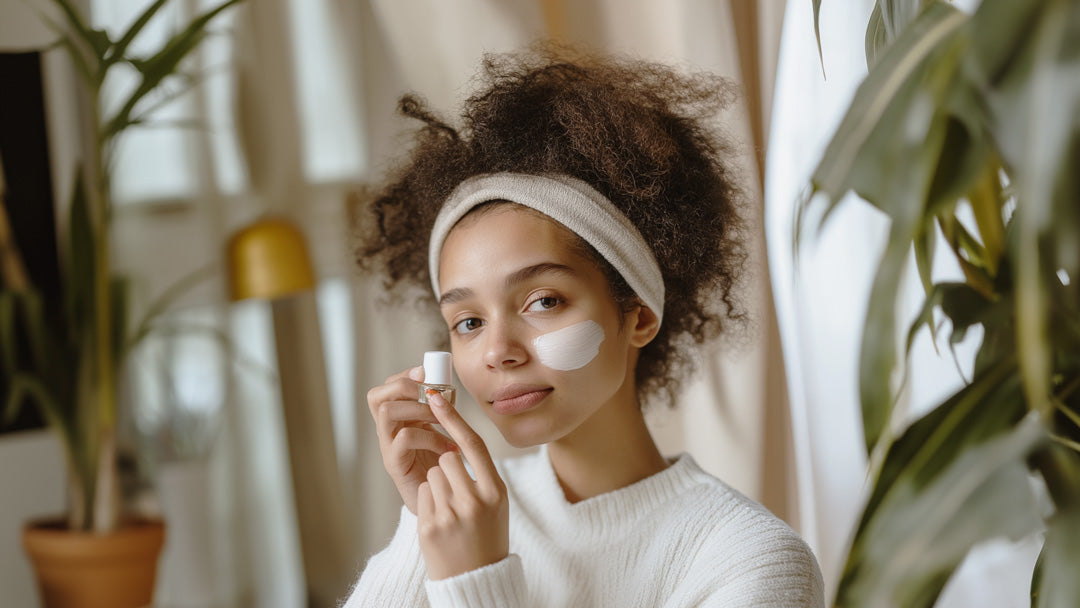
Creating a Personalized Skincare Routine: A Step-by-Step Guide
Share
Article Highlights:
- Understand your skin type and specific needs to create an effective routine.
- Learn the importance of consistency and proper product layering.
- Discover how to integrate both natural and clinical approaches for optimal skin health.
Building a personalized skincare routine can be transformative, not just for your skin but for your overall well-being. Whether you’re dealing with specific concerns like dryness or acne, or simply aiming to maintain healthy, glowing skin, a routine that suits your unique needs is essential. This guide will walk you through the steps to create a skincare regimen that works for you, combining both natural and clinical approaches.
Step 1: Understand Your Skin Type and Concerns
Before selecting products or treatments, it’s crucial to identify your skin type and any specific concerns. The main skin types are:
- Oily: Characterized by excess sebum production, leading to a shiny complexion and often clogged pores.
- Dry: Lacks moisture, leading to a tight feeling, flakiness, and fine lines.
- Combination: Features both oily and dry areas, often with an oily T-zone and dry cheeks.
- Sensitive: Prone to redness, irritation, and reactions to certain products.
If you’re unsure about your skin type, consider consulting a dermatologist or using online resources to guide you. Understanding your skin type is the foundation of any effective skincare routine.
Step 2: Choose the Right Products
Once you know your skin type, the next step is selecting products that address your specific needs. Here’s a basic outline of a skincare routine:
- Cleanser: Start with a gentle cleanser that removes dirt and excess oil without stripping your skin. For oily skin, a foaming cleanser may be best, while a hydrating cream cleanser works well for dry skin.
- Toner: A toner can help balance your skin’s pH and prepare it for the next steps. Choose an alcohol-free toner with soothing ingredients if you have sensitive skin.
- Serum: Serums are concentrated treatments that target specific issues like hyperpigmentation, wrinkles, or dehydration. For example, a vitamin C serum can brighten the skin, while hyaluronic acid adds moisture.
- Moisturizer: Moisturizing is crucial for all skin types. If you have oily skin, opt for a lightweight, non-comedogenic formula. For dry skin, a richer cream may be necessary.
- Sunscreen: Daily sunscreen is essential to protect your skin from harmful UV rays, even if you’re indoors most of the day. Choose a broad-spectrum SPF of at least 30.
Step 3: Layering Your Products Correctly
The order in which you apply products can affect their effectiveness. The general rule of thumb is to apply products from the thinnest to the thickest consistency:
- Cleanser
- Toner
- Serum
- Moisturizer
- Sunscreen (AM routine only)
This order ensures that each product is absorbed properly and that your skin gets the full benefit of each step.

Step 4: Integrate Natural and Clinical Approaches
Combining natural ingredients with clinically proven treatments can provide the best of both worlds. For instance:
- Natural Ingredients: Look for products containing natural ingredients like aloe vera, chamomile, or green tea, which are known for their soothing and antioxidant properties.
- Clinical Treatments: Consider incorporating products with ingredients like retinol, glycolic acid, or niacinamide, which are backed by research and can offer more significant results in treating concerns like aging, acne, or uneven skin tone.
Practical Tips for Maintenance
- Consistency is Key: Stick to your routine daily, morning and night, to see the best results.
- Adjust with the Seasons: Your skin’s needs can change with the weather, so be prepared to swap out products as needed, such as using a heavier moisturizer in winter.
- Listen to Your Skin: If you notice irritation or breakouts, adjust your routine or consult with a skincare professional to ensure you’re using the right products.
FAQ Section
Q1: How do I determine my skin type?
A1: To determine your skin type, observe how your skin behaves throughout the day. If it gets shiny, you likely have oily skin. If it feels tight and shows flakes, it’s probably dry. Combination skin will show both characteristics in different areas, while sensitive skin reacts easily to new products or environmental changes.
Q2: Can I skip any steps in my skincare routine?
A2: While some steps can be optional depending on your skin’s needs (like toner), cleansing and moisturizing are non-negotiable. Sunscreen is also essential in the morning to protect against UV damage.
Q3: How often should I update my skincare routine?
A3: It’s a good idea to reassess your routine every few months or when your skin undergoes noticeable changes. This could be due to seasonal changes, aging, or new skin concerns that arise.
Q4: Are natural products better than clinical ones?
A4: Natural products can be beneficial and gentle on the skin, but clinical products often contain active ingredients that can address specific concerns more effectively. A combination of both, tailored to your skin’s needs, is often the best approach.
